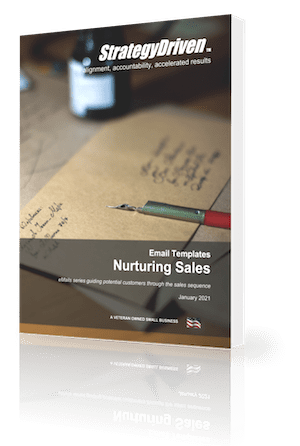Maximizing Seasonal eCommerce Sales With Effective Marketing Strategies
Seasonal sales are a pivotal moment for eCommerce businesses. Whether it’s Christmas, Black Friday, or summer deals, these periods present golden opportunities for online retailers to attract new customers, boost sales, and build long-term brand loyalty. With the right approach, a well-planned seasonal marketing campaign can lead to significant growth for your store. This guide will walk you through how to effectively execute seasonal campaigns to maximize returns.
1. Understand Seasonal Trends and Customer Behavior
The first step to a successful seasonal campaign is understanding the trends and behaviors that accompany specific periods of the year. Different seasons bring shifts in consumer buying habits. For instance, during the winter holidays, consumers are focused on buying gifts, decorations, and warm clothing, while summer sales may revolve around outdoor gear, travel essentials, and fashion.
To harness this power, do some research to identify what products typically sell well during different seasons in your niche. Leverage past sales data to understand which items saw the highest demand and adjust your product inventory accordingly. This proactive step ensures that you align your campaign with the needs of your customers, thus increasing the likelihood of conversions.
2. Plan and Start Your Campaign Early
Timing is crucial for seasonal marketing. Unlike standard promotions, seasonal sales are time-bound, so the earlier you start planning, the better your campaign will perform. Ideally, you should begin organizing your efforts three to four months ahead of major events like Christmas or Black Friday.
Early preparation allows you to design engaging content, set up targeted ads, coordinate with influencers, and ensure you have sufficient stock. Being early also gives you a competitive edge—customers are more likely to remember your brand if you’re one of the first retailers to offer promotions for an upcoming season.
3. Create Compelling Offers
Your offer is the heart of any ecommerce seasonality campaign. It’s not enough to simply mark products down; you need to provide offers that resonate with your audience and offer real value. Popular options include discounts, product bundles, buy-one-get-one deals, or limited-time offers.
Ensure that the offers align with the seasonal theme and customer expectations. For instance, summer sales might focus on beachwear and outdoor items, while winter sales could prioritize cozy clothing or holiday gifts. The more relevant your offer is to the season and customer demand, the more effective it will be.
4. Use Seasonally-Themed Visuals
Visuals are one of the most powerful tools you have in grabbing the attention of potential buyers. During seasonal campaigns, you’ll want to use images, banners, and graphics that evoke the specific atmosphere of the season. This not only captures the attention of your customers but also reinforces the sense of urgency and relevance of your promotions.
For example, winter-themed promotions can feature snowy landscapes or Christmas decorations, while summer sales can highlight bright colors and sun-filled imagery. Your goal is to create visuals that stand out in a crowded online space while emphasizing the seasonal nature of your offer.
5. Leverage the Power of Social Media
Social media is a must-have tool for any seasonal eCommerce campaign. With platforms like Instagram, Facebook, and TikTok, you can reach a wide audience in a short amount of time. Start by creating posts that showcase your offers, complete with seasonally relevant hashtags (e.g., #BlackFridayDeals or #SummerSale).
To engage your audience further, consider running giveaways or contests where followers can win discounts or prizes related to your campaign. These initiatives help increase user engagement and generate excitement around your promotions. Make sure to maintain an active presence by responding to comments and messages to enhance customer engagement and loyalty.
6. Use Email Marketing to Drive Conversions
Email marketing continues to be one of the most effective channels for promoting seasonal sales. Use your email list to send personalized newsletters that announce your seasonal offers. Segment your list based on past purchase behavior or customer preferences to tailor your message for each group.
Be sure to include clear calls-to-action (CTAs) in your emails, such as “Shop Now” or “Claim Your Discount.” These simple phrases can drive recipients to click through to your website, increasing traffic and conversions. Don’t forget to highlight any limited-time deals to create urgency.
7. Optimize Your Website for the Seasonal Rush
A smooth and user-friendly website is critical to capturing conversions during seasonal sales. Ensure your site can handle the increased traffic that often accompanies these periods. Optimize the checkout process by making it easy for customers to complete purchases quickly and without frustration.
Additionally, feature your seasonal promotions prominently on your homepage or through dedicated landing pages. Clear and attractive design, along with well-placed CTAs, can make it easier for shoppers to navigate directly to the products or offers they’re interested in.
8. Incorporate Paid Advertising for Wider Reach
To expand the reach of your seasonal campaign, consider investing in paid advertising. Platforms like Google Ads and Facebook Ads allow you to target specific audiences based on demographics, behavior, and interests. Paid ads can help drive traffic to your store, especially when organic reach may be limited.
Set a budget for your ads and monitor their performance to ensure you are getting the most out of your investment. Well-placed ads with strong visuals and compelling offers can be the tipping point that drives a new customer to your site.
9. Collaborate with Influencers for Maximum Impact
Influencer marketing has grown in popularity and can be a powerful tool during seasonal sales. By partnering with influencers in your niche, you can introduce your products to new audiences who trust the opinions of these social media figures.
Choose influencers whose follower demographics match your target market, and work together to create authentic content that showcases your products within the context of the season. Whether it’s an unboxing, review, or promotional post, influencers can help generate buzz and direct traffic to your eCommerce store.
10. Analyze Results and Refine Future Campaigns
Once your seasonal campaign wraps up, don’t forget to analyze its performance. Look at key metrics such as sales, website traffic, email open rates, and social media engagement to assess the effectiveness of your efforts. Identifying what worked well (and what didn’t) will allow you to refine your strategies for the next seasonal opportunity.
11. Keep Customers Engaged Year-Round
While seasonal sales are crucial, it’s important to maintain engagement with your customers throughout the year. Use loyalty programs, regular updates, and personalized offers to keep customers coming back long after the season is over. Maintaining consistent engagement fosters customer loyalty, turning one-time buyers into repeat customers.
In conclusion, effective seasonal marketing campaigns require a combination of strategic planning, creativity, and an understanding of customer needs. By leveraging a variety of marketing tools—from email and social media to influencers and paid ads—you can position your eCommerce store for success during key shopping periods. Track and analyze your results to continually improve, and you’ll be well on your way to sustained growth year after year.














Leave a Reply
Want to join the discussion?Feel free to contribute!